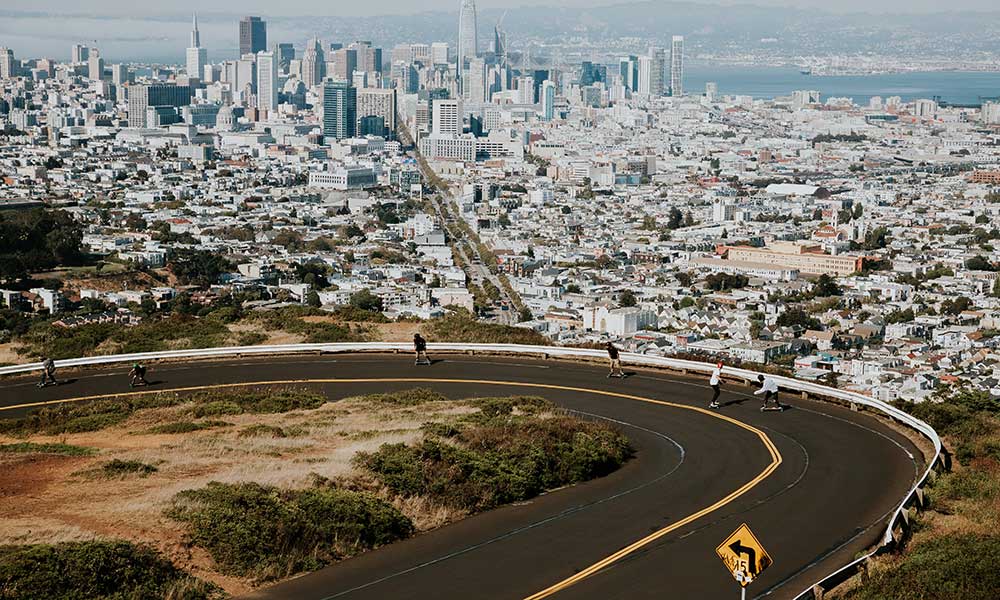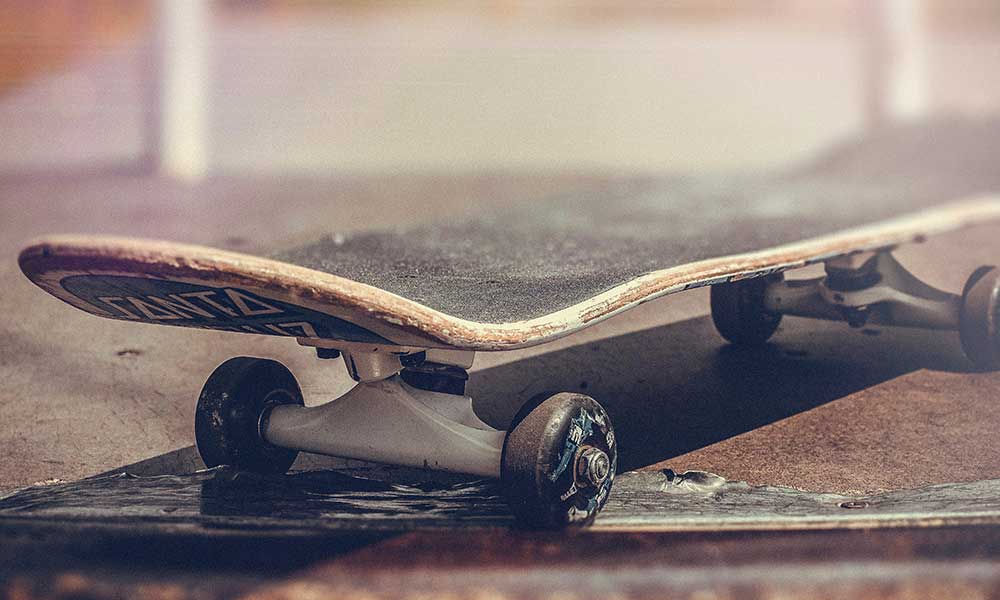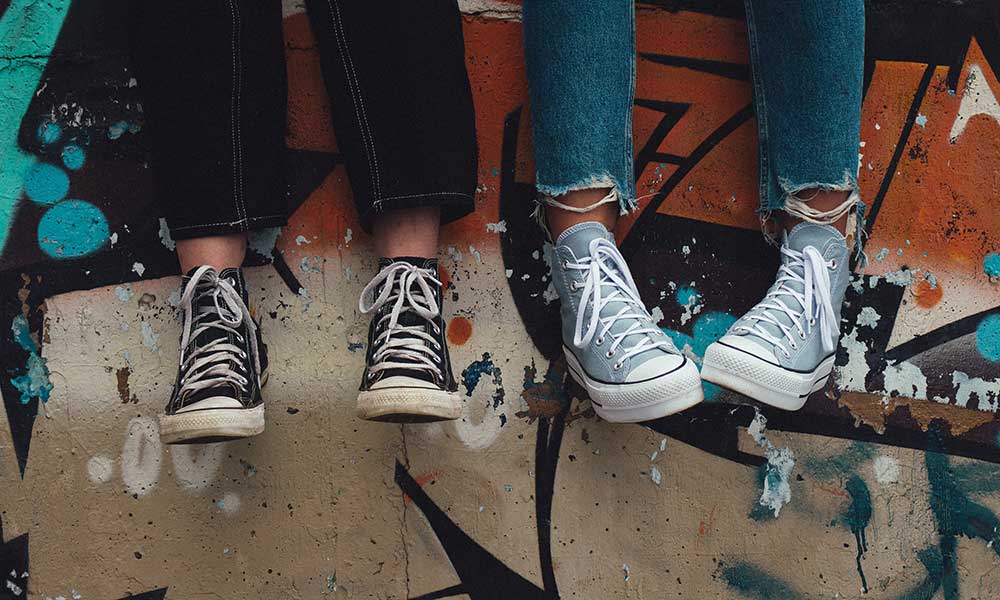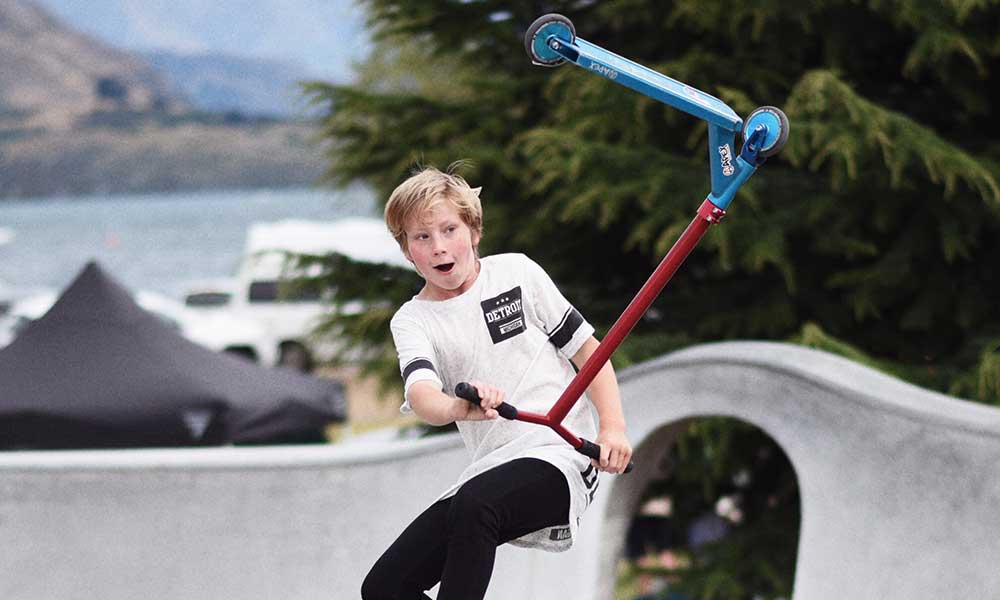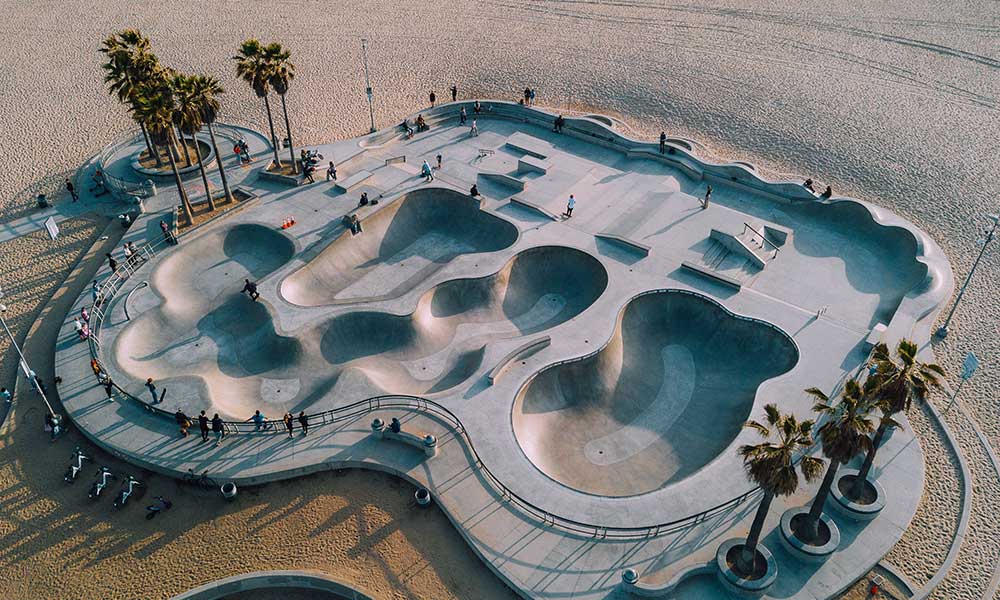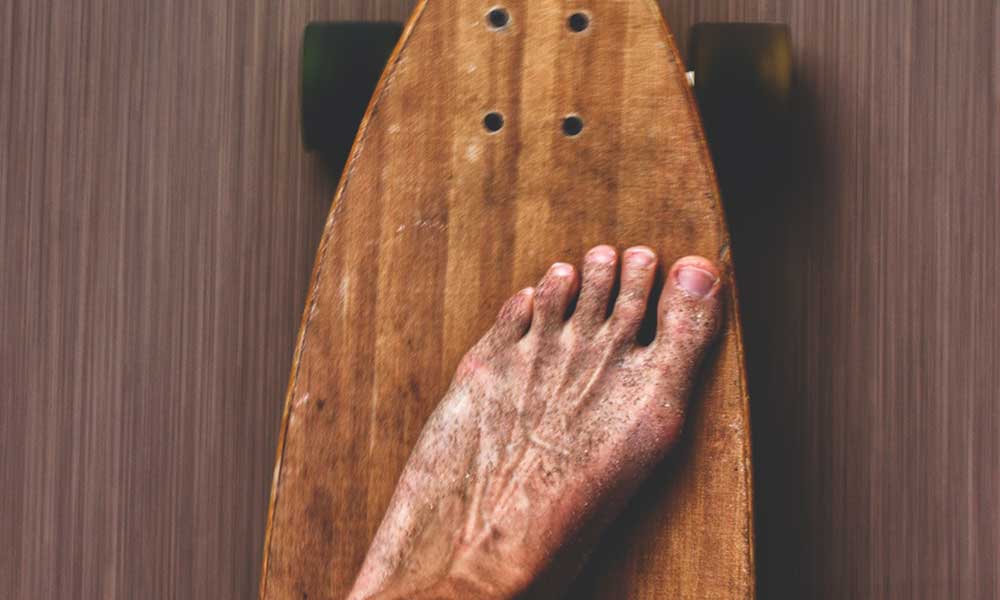How fast is a skateboard and what is its average speed? In the following guide, we’ll address those questions and more.
The answers might just surprise you.
How Fast Can a Skateboard Go?
The average speed of a skateboard is between 6 and 13 MPH. The better the skateboard and the more experienced the rider, the faster they will go.
For context, most people walk at an average speed of 3 to 4 miles per hour while jogging is about 8 MPH.
You can outrun a walker and a jogger while on a skateboard. If you’re an experienced skateboarder riding on flat ground, you could even move quicker than the average sprinting speed. But if you go up against a professional sprinter, they’ll likely leave you in their dust.
Is 25 MPH Fast on a Skateboard?
25 MPH is incredibly fast, and also very difficult to achieve. At 25 MPH, you’re moving at a similar speed to Usain Bolt during his World Record-breaking run, and he only reached those speeds for a fraction of a second.
This incredible skateboard speed will be difficult to achieve on a standard skateboard and for an inexperienced rider, but it pales in comparison to the speed achieved by Peter Connolly, the current world record holder.
What is the Fastest Speed on a Skateboard?
Peter Connolly smashed the record for the fastest skateboard speed in 2017. He recorded an epic time of 91.17 MPH at the L’Ultimate Descente, a gravity sports event that takes place in Quebec, Canada every year.
The English skateboarder rode a longboard skateboard down a hill while wearing clothes designed with aerodynamics in mind.
Connolly has his sights set on breaking the 100 MPH barrier and further adding to his legendary status, but he has not yet broken that milestone.
Is a Skateboard Faster Than a Bike?
Bicycles are faster than skateboards on average. However, it all depends on the type of bike/board and the ground.
If you’re using a longboard skateboard, you can outpace a few types of bikes, especially if there is a natural slope. But if you’re competing against a racing bike over flat ground, you’ll almost certainly be beaten on a skateboard.
It’s easy to look at the record set by Peter Connolly and assume that you can easily achieve half or even a quarter of that speed, in which case you could outpace a bike. But Connolly is a professional and was riding over very specific terrain—the average skater can’t get anywhere near those speeds.
How Can You Make a Skateboard Go Faster?
There is a huge difference between the average skateboard speed and the world record skateboard speed. So, what gives?
There are several factors involved in determining the maximum speed of a skateboard. If you can improve these, you can hit faster speeds.
The Type of Skateboard
Some skateboards are designed for tricks; others are designed for speed.
A street skateboard won’t do you any good here. If you want to move quickly, you need a longboard skateboard.
If you want even more speed, check out electric skateboards. These are motorized and don’t need to be pushed. They can reach speeds of up to 25 MPH, making them perfect for daily commutes.
A cruiser skateboard is also a good option if you’re commuting. It is generally quicker than a street skateboard, but it’s not as fast as a longboard.
Bigger Wheels
Bigger wheels = more speed. It’s a simple equation and one you should keep in mind when thinking about your skateboard setup.
Large wheels aren’t as good for turns, and that’s why street skateboard wheels are so small, but if speed and cruising are key, bigger is always better.
Softer Wheels
Those wheels don’t just need to be bigger. They should also be softer.
You’ll find big soft wheels on the fastest longboards, including the one ridden by Peter Connolly.
Softer wheels deliver a smoother ride and have much a better grip.
Better Bearings
Skateboard bearings are not as important as wheel size, but they are still an essential piece of the puzzle.
You can clean the bearings that you already have or purchase a new high-performance set. Ceramic bearings often work best, but there are many options out there.
Good bearings reduce friction and ensure the skateboard wheels move quickly and freely.
The best bearings are very expensive, as are the best wheels. Keep this in mind when building your skateboard and ask yourself whether the cost is worth the fractionally improved speed.
The Surface
You’re going to need a flat road with minimal obstacles if you want to achieve the highest speeds possible.
Sloping roads and sidewalks are best, as you can use the natural slope to pick up speed, letting those big wheels do their thing. If not, just make sure it’s a flat and even surface.
You’ll also want to skate somewhere without too many big stones, trees, stop signs, curbs, or pedestrians, as all of these will get in your way and slow you down.
Stay away from traffic, as well. You might think that you’ll have plenty of time to watch, listen, and avoid any serious accidents, but if you’re racing in excess of 20 MPH with the wind in your face and ears, it only takes one misjudgment or oversight to cause a serious accident.
The Conditions
You should refrain from skating in the rain. Not only can it be dangerous and detrimental to your skateboard, but it could also increase the risk of accidents when you’re riding at speed.
The same is true for icy conditions. A clear and warm day is often best for skating.
The Rider’s Skill
Your riding skills also play a role in determining your average skateboard speed.
It’s not just about pushing as hard as you can and then waiting for the skateboard to roll. Experienced skateboarders develop specific techniques that allow them to gain maximum speed with minimal effort.
Pushing hard certainly comes into it, but you must also learn where to place your feet, how to maintain your balance, and how to avoid unintentional drag.

